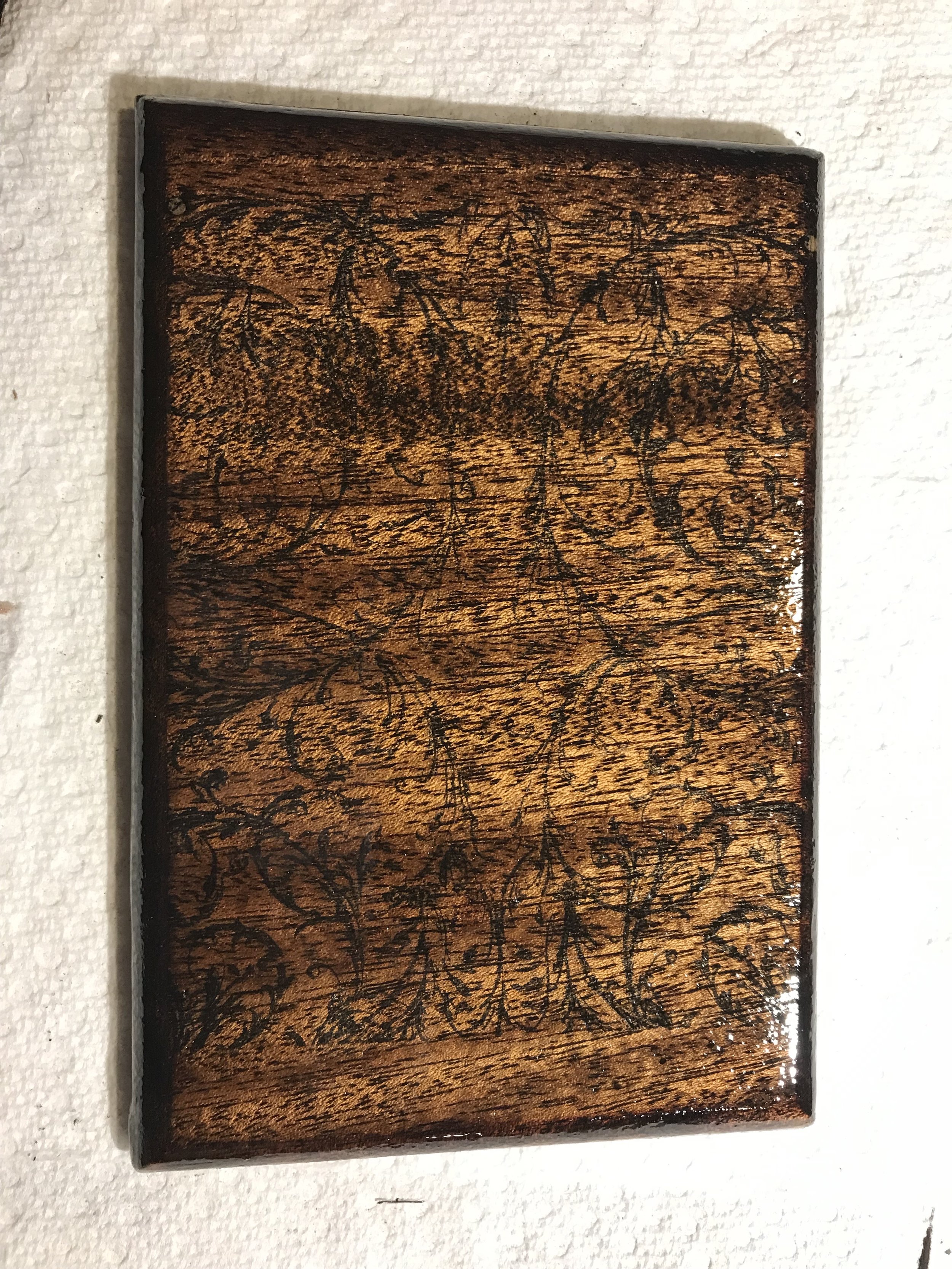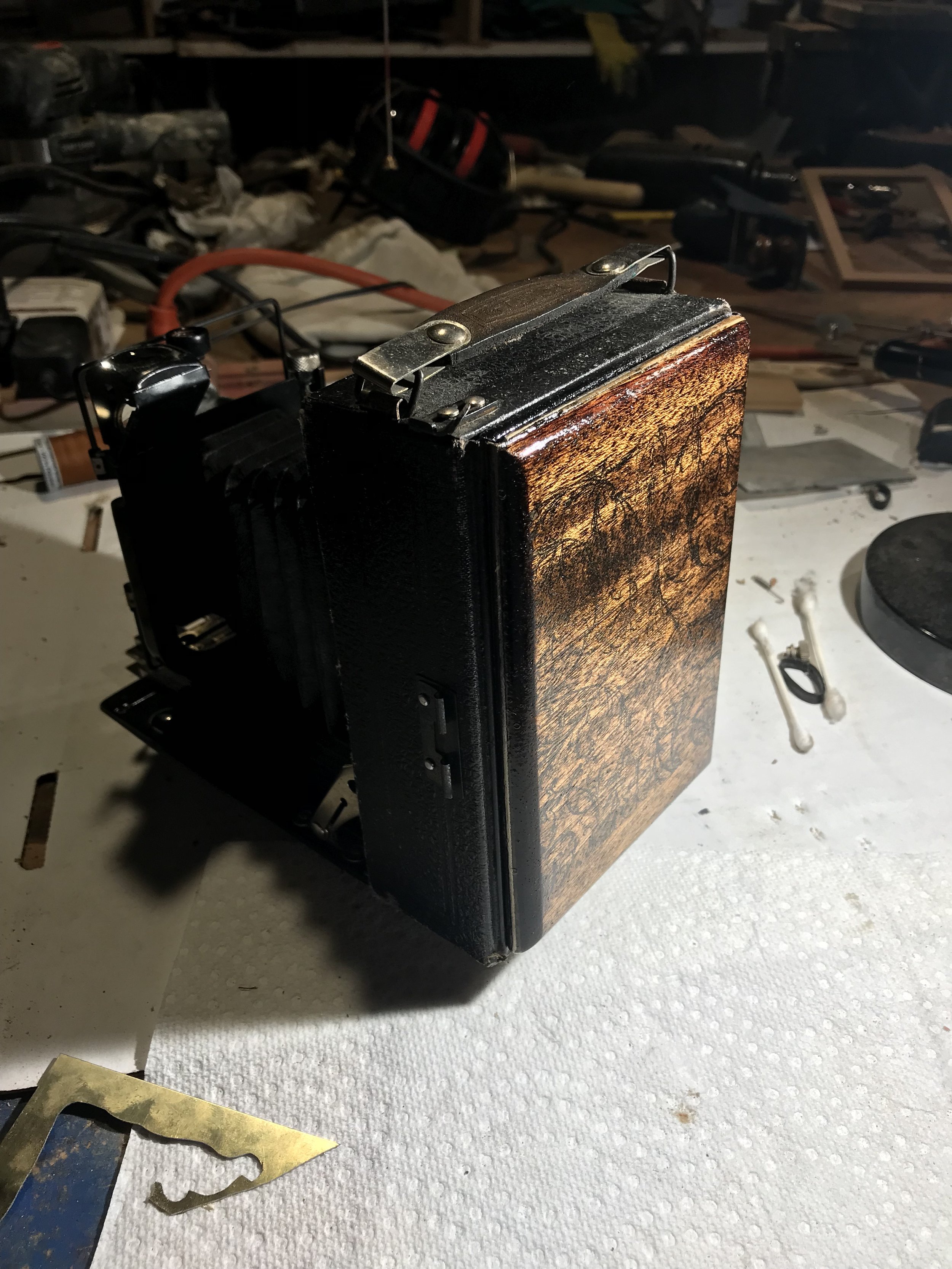A friend of mine picked up this 1938 GOMZ Fotokor at a market in Ukraine early in 2019. He noticed the work needed on the camera, and figured I might enjoy tearing it apart and putting it back together. A correct assumption!
A little history on the camera: the GOMZ (Gosularstvennyi Optiko-Mekhanicheskii Zavod) Fotokor was a folding plate bed camera built in the Soviet union between 1930 and 1941. It was the first Soviet camera to sell a million copies, and was a favourite of Soviet journalists and photographers. The production ceased early on in the second world war when the Germans laid siege to Leningrad, which was home to the GOMZ factory. Technically a simple camera, it had only 1/25, 1/50, 1/100, and manual release and hold options for speed. Lenses were small and (comparatively to the contemporary German and American lenses) poorly made.
So now to my camera. What works, what doesnt work: Well for a start the shutter barely moves when it is released, feeling almost like its stuck together with honey. The aperture is totally frozen in place, and refuses to move even with fairly firm pressure. This means I would have to take apart the whole lens/shutter/aperture assembly. Glad its a Soviet camera and built like a tank. Furthermore the back plate of the camera is rusty, and it didnt come with a film/plate holder, which essentially means the camera has no back. This means I’ll either have to buy a film plate holder to be able to use the camera, or otherwise build something to act as a back.
Below you can see some of the progress pictures of disassembling the shutter assembly. The good news is I was able to fix the mechanism by flushing out the 80 year old grease which had long turned into a gummy mass, and replace it with new lubricating oil. The shutter now works correctly on all speeds, though I need to troubleshoot the mechanism to keep it open using the Bulb setting.
Below I attempt to fix the stuck aperture blades, which turns out to be fruitless. The blades had been stuck together for who knows how long, and through repeated cycles of heating and cooling inside the lens assembly, the delicate plastic had warped and dry rotted horribly. Even if I could have gotten them unstuck, there is no way they would have ever been able to slide freely in and out. This left me no option but to remove them from the camera, and shoot from now on fully wide open.
I also disassembled the lens to clean out some of the inner elements (and to peak around at how the whole thing worked). Before putting the whole lens and shutter assembly back together and re-installing it on the camera.
Finally I decided to build a new back plate for the camera to make it lightproof. In its place before was a ground glass viewing screen, which is great for lining up and focusing portraits, but since I have no plate holders to slide in front of the ground glass, I had to make the sacrifice. I removed the ground glass, polished off the rust from the metal plates, and applied a fresh coat of rust-proof paint, and then installed a mahogany backplate to seal it. Not wanting to waste an opportunity for a little design, I stamped a nice pattern onto the mahogany and finally stained and lacquered the plate.
This does mean that ill have to rely on my focusing table for getting the portrait in focus, rather than using the ground glass, but I think it should work ok.
My goal for this camera is to be able to shoot wet or dry plates through it, and hopefully achieve some otherworldly effects due to the apertureless lens. I have shot a single test piece using some darkroom film so far, and the depth of field is satisfyingly narrow, with bokeh and lens effects in the foreground and background of the shot. It also is my first approach to soft focus photography, which is an antique style that I’ve never been able to accomplish thus far, as I don’t have the right vintage lenses. perhaps this apertureless freak of a camera will get me closer to achieving true soft focus!
Seen below:
My workshop vice with chisel using the Fotokor
This photograph at least serves as a proof of concept that the shutter and lens are working, and the camera should be able to shoot wet plates; maybe even soft focus wet plates!
Update 12/2019
I finally got the chance to put the GOMZ through its paces! I tested both darkroom prints and also shot some collodion photographs with the camera. Below are a few of the darkroom print results. the depth of field is so incredibly narrow that the resulting images are almost entirely out of focus except for the tiniest of slivers.
Below are a few of the still lives I set up for the wet plates, and the resulting images of the setups.
























